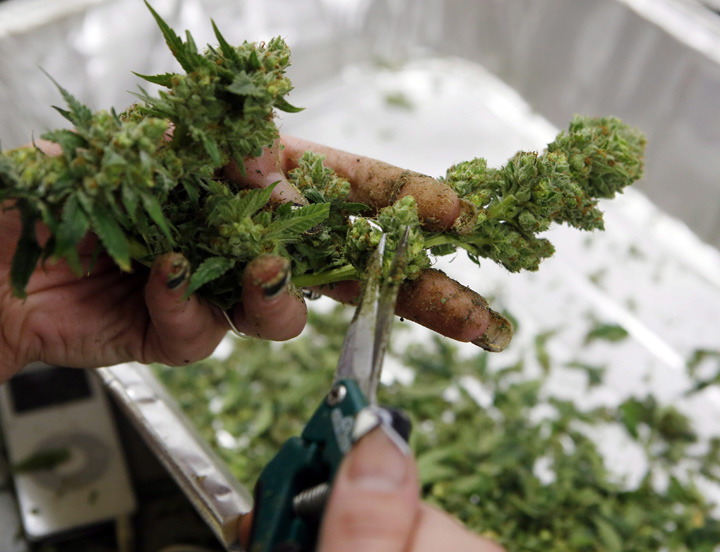Toronto police are busting fewer grow-ops – down about two-thirds since 2010: That year, police found 245 marijuana grow houses, compared to just 87 last year.

And defence lawyer Peter Zaduk links the change to pot prices in the United States falling “very drastically,” which over the past few years has wrecked Canada’s marijuana exports.
Meantime, Canada’s losing its technological advantage.
“It used to be that Canada was far ahead of the United States in terms of our hydroponic marijuana industry, and much of the Canadian product was exported to the United States. But in the last five years, production methods from Canada have been copied in the United States, so they now have a very much greater domestic marijuana industry.”
It’s having a serious impact on Zaduk’s business.
“I used to have half my practice in marijuana production cases, and now I might have three or four of them. Ten years ago, I might have had 20 or 30 at any given time.”
Six or eight years ago, apartment buildings would sometimes see large-scale grow operations – in 2006, police found a grow at 2600 Jane St., near Sheppard Ave. W., covering 22 apartments, and in 2007 another was found at 157 Jameson Ave, south of King St. W., covering 11 apartments on four floors of the building. But nothing on that scale has been reported recently.
Toronto police did not respond to repeated requests for comment.

The drop roughly coincides with stricter penalties for marijuana cultivation becoming law in early 2012. (Before then, few grow operators rarely spent time in jail.)
But Zaduk doubts there’s a connection.
“People don’t know about the penalties, for one thing. If the profit is big enough, it doesn’t affect people’s behavior, and what it also does, for those who are aware, is that it makes the more organized criminals have a monopoly, because they are the ones who are prepared to take the risk. It may deter a few less serious people.”
- UP Express stops in Toronto reduced as Metrolinx shakes up GO train service
- Driver missing in Ontario after police say vehicle was pulled into creek
- Ontario may not meet LTC direct care target due to staff shortages: document
- Roadblock cleared: Ontario’s Highway 413 moving forward after governments reach agreement
Toronto’s numbers appear to reflect a national trend: charges for production of cannabis for the purpose of trafficking were exceptionally low in 2011 and 2012 compared to any of the previous 13 years.
Looking at the eight-year period between 2006 and 2013, when Toronto police discovered about 1,400 grow operations of various sizes, the strongest geographic pattern is a line stretching up Jane St. from the 401 to Steeles. The Agincourt area of Scarborough also has a major concentration of pot busts. There were smaller clusters in Weston, Rexdale, the Crescent Town apartment neighbourhood near Victoria Park Ave. and Danforth Ave. and Parkdale.
The data was obtained from Toronto police through access-to-information requests.





Comments